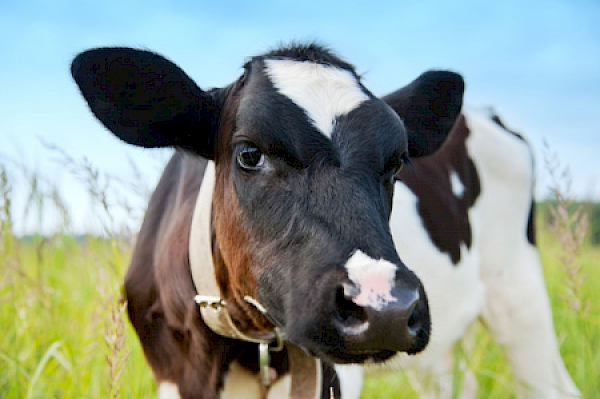About Us
- About
- Meet The Team
- Corporate
Roboscientific – Automatic Non-invasive Real-Time Monitoring for Disease
Helping to feed the world
The 2019 Tesco Agri-Tech Innovation TJam winner, Roboscientific, is based outside Cambridge. We have been developing our expertise in VOC analysis, working with leading agricultural experts to provide reliable and fast results detecting disease and infestation in livestock and crops.
We are leading the field developing the next generation of sensors for applications that use Volatile Organic Compounds (VOCs) to detect and identify diseases in livestock and crops as soon as they start to appear.
Our aim is to provide agriculture with the tools to improve the health and quality of livestock as well as reducing losses caused by deterioration of stored crops such as potatoes and onions.
By helping farmers reduce waste and improve quality, we can be part of the solution helping to feed the peoples of the world as supplies become ever harder to sustain.
720 Portable Handheld VOC Analyser
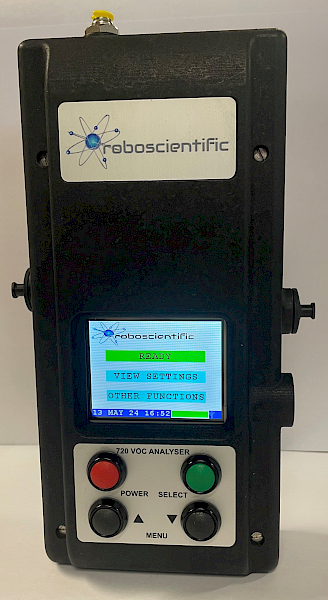
The Roboscientific 720 VOC Analyser is handheld and battery powered, suitable for use in laboratory and remote locations.
It is a flexible analyser which can be used for applications ranging from early detection of disease in humans & animals to quality control of food and drink. It features Roboscientific’s proprietary sensing technology and a 24 sensor array which can be used to deliver data and digital fingerprints in text file formats, compatible with many different processing packages. Principal Component Analysis and Discriminant Analysis have both been used routinely to analyse the data produced. Roboscientific’s VOC sensors provide leading edge technology to deliver exceptionally high levels of sensitivity and tuned specificity – sampling typically at <10ppb from robust and stable sensors which provide consistent and long-lasting performance. The 720 is fitted with a broad specificity standard VOC array for “General Purpose” applications to allow multiple sample types to be analysed. If a particular application area is being targeted and the VOCs of interest are known, then tuned bespoke arrays can be created for that particular application.
Based on research using our benchtop 307B VOC Analyser, we are developing a range of diagnostic tools from handheld monitors to room/barn monitors that will provide farmers with a low-cost method of monitoring the status of their produce.
RoboScientific has already developed a fast, efficient method of identifying significant changes in the health of chickens which indicate the onset of diseases including Clostrideum perfringens, Campylobacter, Coccidiosis, Ecoli and Salmonella and detect the onset of the deterioration of stored crops such as potatoes and onions.
Work is underway to provide similar solutions in other livestock including cattle and pigs, stored grain such as wheat and salad crops which are growing under cover.
The Roboscientific 307B provides fast and accurate analysis of Volatile Organic Compounds to identify targetted digital fingerprints of a variety of conditions and diseases using bespoke sensor arrays.
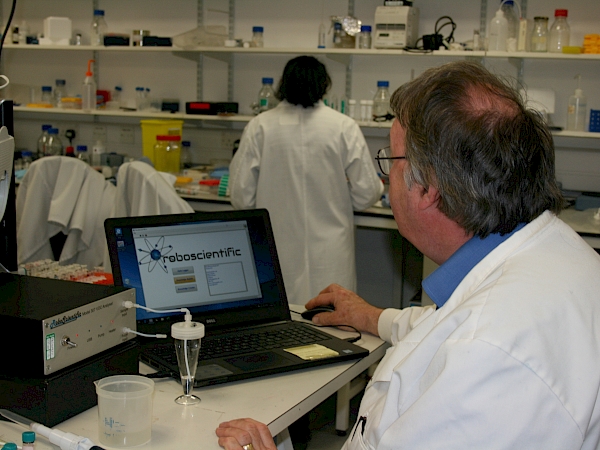
Barn Monitoring - Broiler Chickens
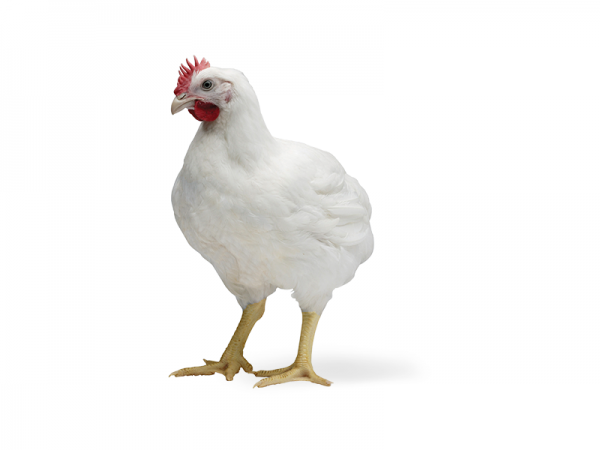
The Roboscientific Barn Monitor automatically senses the air in chicken houses to provide fast reliable detection of the onset of diseases in chickens including:
- Clostrideum perfringens
- Campylobacter
- Coccidiosis
- Ecoli
- Salmonella
Barn Monitoring - Pigs
Under development is an automatic barn monitor to detect disease as it occurs in indoor pig herds. As with the chickens, the monitor is programmed to sample the air and analyse the VOC fingerprints present to identify if/hen a disease outbreak occurs. Still in its early stages of disease identification, the Roboscientific Pig Barn monitor will be trialled on-farm in 2025.
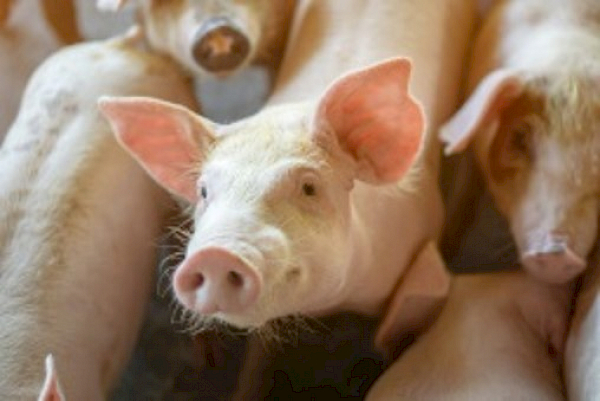
IUK funding to develop a non-invasive system of monitoring calf health

The project focusses on developing an AUTOMATED data-driven INNOVATION for NON-INVASIVE and REAL-TIME monitoring of respiratory disease in dairy-bred calves. Bovine respiratory disease (BRD) is the most serious issue facing beef and dairy farmers, costing the UK sector alone around £80M per annum (Zoetis 2022) through mortality, veterinary costs, increased labour and reduced animal productivity at the point of infection, but also in later life.
As part of the IUK funded DETECT project, Roboscientific aims to create an automated breath sampler to sample breath from a calf as it feeds and automatically analyse it in real-time so that the health of the calf is monitored without any additional interaction with the animal, reducing stress and labour whilst ensuring health issues can be speedily identified and treated.
